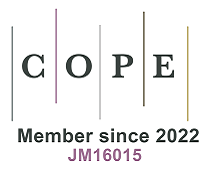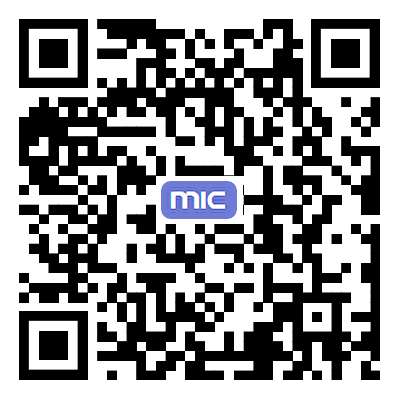Direct visualization of spin-dependent orbital geometry on the Na2IrO3 surface with ultra-high resolution
Abstract
The honeycomb iridate Na2IrO3, as a candidate for the Kitaev model, has drawn increasing attention in recent years. It is a rare example of a strongly correlated, topologically nontrivial band structure that may have protected quantum spin Hall states. The nature of its intriguing insulating phase and magnetic order is still under debate. In the present work, we combine low-temperature scanning tunneling microscopy/spectroscopy and density functional theory calculations to show that Na2IrO3 exhibits a band gap of 420 meV at 77 K, indicating a novel relativistic Mott insulator rather than Slater-like states. In addition, it is demonstrated that the Ir-O-Ir bonds and the subtle local density of states variation of Ir atoms induced by spin correlations can be imaged in real space in ultra-high resolution utilizing a spin-polarized oxygen-functionalized scanning tunneling microscopy tip. The direct observation of the zigzag Ir-O-Ir bonds at 77 K strongly dictates the zigzag magnetic ordering below TN ≈ 15 K because of the strong spin-orbit interactions that lock the lattice and magnetic moments.
Keywords
INTRODUCTION
The A2IrO3 (A = Na, Li, etc.) honeycomb iridate is among the most debated iridate compounds, with the
Scanning tunneling microscopy/spectroscopy (STM/S) are powerful tools with high spatial and energy resolutions. In particular, great success has been achieved in their applications in the study of high-Tc superconducting cuprates[27]. Despite that, the atomic-resolved STM imaging on the surfaces of complex oxides remains very challenging due to the insulating nature of the materials and the strong interactions between samples and STM tips[10,28]. Usually, the density of states (DOS) of the oxygen anions and the related orbitals of cationic transition metals can hardly be resolved in the topographic STM images. Furthermore, spin-polarized STM imaging has been successfully achieved on the surface of magnetic metals by antiferromagnetic CrO2 tips[29-31] and spin-polarized magnetic-coated tips[32-35]. Spin-polarized imaging on the surfaces of complex oxides has rarely been obtained.
This work reports that ultra-high resolution STM imaging can be achieved on the Na2IrO3 surface using an oxygen-functionalized STM tip. A Mott-type gap is observed in the tunneling spectroscopy at a temperature far above the transition temperature of the antiferromagnetic order of Na2IrO3, and such a gap has a downshift of the Fermi energy at the sites of oxygen vacancies. Orbital geometry of the Ir-O-Ir bonds and the subtle local DOS variation of Ir atoms induced by spin correlations are visualized directly in the topographic STM images due to the strong spin-orbit coupling (SOC), which provides a direct evidence for the zigzag magnetic ordering in this material.
MATERIALS AND METHODS
STM
The crystals used in this study have the typical sizes of 2 mm × 2 mm × 0.5 mm. Samples were cleaved in situ at room temperature (RT) under vacuum with pressure better than 1 × 10-10 torr. The cleaved sample was quickly transferred into a Unisoko-1300 commercial STM for measurement at a temperature of 77 K. A commercial Pt-Ir tip was prepared by gentle field emission above a clean Au(111) sample. The bias voltage was applied on the sample during the STM observations. The STM images were analyzed using WSxM, a freeware scanning probe microscopy software based on Microsoft Windows[36].
Calculation
The first-principles density functional theory (DFT) calculations were carried out with the Vienna Ab Initio Simulation Package (VASP)[37]. The core and valence electronic interactions were described with the frozen-core projector augmented-wave (PAW) potentials[38]. The Kohn-Sham single electron states were expanded in plane waves with an energy cut-off of kinetic energy of up to 400 eV. The exchange-correlation energy was calculated with the Perdew-Burke-Ernzerhof (PBE) of generalized gradient approximation (GGA)[39]. The tolerance of 10-4 eV was chosen for energy convergence of electronic calculations. The Na2IrO3 was modeled with a (2 × 2) unit cell. The metal STM tip was modeled with a pyramid of Ir(111) in which the apex is a single Ir atom. The oxygen-functionalized tip was mimicked by an Ir(111) pyramid with five oxygen atoms at the apex. A large vacuum of 25 Å along the direction normal to the surface was employed to separate surfaces from their periodic images. The Brillouin zone of reciprocal space was modeled based on the Γ centered Monkhorst-Pack scheme, where a 4 × 2 × 1 grid was used in geometry optimizations and calculations of electronic properties. STM images were simulated using the revised Chen method implemented in the bSKAN code[40].
RESULTS AND DISCUSSION
STM characterization of the sample surface
A representative topographic STM image at positive bias voltage (Vb = +1.5 V) for the cleaved Na2IrO3 surface is shown in Figure 1A. The honeycomb lattice is clearly resolved. The measured lattice distance is about 5.2 Å, close to the distance between nearest neighbor Na atoms in the NaIr2O6 slab (about 5.3 Å)[10,14]. It has been reported that the empty-state STM images on oxide surfaces usually visualize the cationic atoms, e.g., Sr atoms in ruthenates and Ti atoms in TiO2 (110) surfaces[41,42]. On this surface, sodium atoms buckle about 1.59 Å higher than the Ir-O plane in the optimized surface structure of Na2IrO3, as shown in Supplementary Figure 1. We, therefore, assign the observed honeycomb lattice to the array of the sodium atoms in the exposed NaIr2O6 layer. Each Na atom is surrounded by six edge-shared IrO6 octahedra, as indicated by the inset of Figure 1A. The STM observations are consistent with the 1 × 1 arrangement of Na atoms in the NaIr2O6 slab, as reported previously[43]. Moreover, two types of defects (α and β) are identified at the atomic scale on the surface. As shown in Figure 1B, defect α appears as a dark hole in both the empty and filled-states images. Considering that it is located at the sodium position, we assign it to the Na vacancy. Defect β is imaged as a bright protrusion at positive biases [Figure 1A] and as a dark pinhole surrounded by adjacent bright spots at negative biases [Figure 1B]. We assign it to the oxygen vacancy. Such assignments are confirmed by the STM simulations. As shown in Figure 1B, the simulated images for both the proposed Na and O vacancies agree well with the STM observations. In addition, the STS spectra [Figure 1C] taken at the pristine Na2IrO3 surface (red) and the site of defect β (black) are compared. Both spectra exhibit a fully opened band gap near the Fermi level with a gap width of about 420 meV. The dI/dV spectrum of defect β has a 0.22 eV downshift of the Fermi energy, implying electron-type doping.
Figure 1. STM topographic images and the tunneling spectrum of the cleaved Na2IrO3 surface. (A) The representative STM topographic image of the RT-cleaved surface of Na2IrO3 (Vb = +1.5 V, It = 20 pA, image size: 30 × 30 nm2). The inset shows the corresponding crystalline structure of Na2IrO3. The Na, O and Ir atoms are represented with blue, red and pink balls, respectively. (B) The upper panel shows the highly resolved STM images of two types of surface defects, assigned as Na and O vacancies, respectively. The corresponding simulated images of Na and O vacancies are provided in the lower panel, and their bias voltages are Vb = +2.0 and -1.9 V, respectively. (C) dI/dV curves measured at the pristine surface and the site of the O vacancy, respectively (T = 77 K). Both spectra possess a uniform fully opened gap. The gap width is 420 meV. STS spectra were acquired using a lock-in technique with AC modulation of 15 mV.
The tunneling spectra have been acquired over hundreds of times at different locations on the surface, producing essentially very similar gap features. It is worth noting that the spectra with a U-shape gap were measured at 77 K, far above the transition temperature of the antiferromagnetic order of Na2IrO3
DFT calculated PDOS and simulated STM images
The electronic structure of Na2IrO3 was revealed by DFT calculations. The optimized surface structure of Na2IrO3 is shown in Supplementary Figure 3. The relaxed structural parameters, such as the O-Ir-O bond lengths and the bond angles, agree well with previous X-ray diffraction measurements[10,14], implying that the surface IrO6 octahedra are essentially the same as in the bulk except that surface Na atoms buckle 1.59 Å out of the Ir-O plane. The projected DOS (PDOS) for each species of atoms calculated by considering the SOC is shown in Figure 2A. As seen, the total DOS is mostly contributed by the iridium and oxygen atoms. According to previous theoretical[9] and experimental[11] discussions, the Ir 5d states are split into t2g and eg orbital states by the crystal field. As the SOC has been considered, the t2g band further splits into Jeff = 1/2 doublet and Jeff = 3/2 quartet bands. With the Jeff = 3/2 band filled and having one remaining electron, the system is effectively reduced to a half-filled Jeff = 1/2 single band system (schematic shown in Inset of Figure 2A). The Jeff = 1/2 spin-orbit integrated states form a narrow band so that even small U opens a Mott gap, making it a Jeff = 1/2 Mott insulator. A prominent gap of about 0.4 eV width is clearly visible in the calculated DOS, agreeing well with both our STS measurement [Figure 1C] and the previously reported ARPES data[11]. It is worth noting that our calculations are consistent with those reported previously[7], where the DOS peaks correspond to the Ir 5d-t2g (Jeff = 3/2 and Jeff = 1/2) bands, respectively. The simulated STM images for the pristine honeycomb lattice of Na2IrO3 surface are shown in Figure 2B. An excellent agreement can be seen between the theoretical calculations and experimental observations
Figure 2. DFT calculated PDOS and the simulated STM images of the pristine Na2IrO3 surface. (A) The calculated PDOS of the top Na layer (red, 1st-Na), the second O layer (black, 2nd-O) and the Ir (blue, 3rd-Ir) in the third layer, respectively. The inset shows the schematic crystal field splitting of the 5d level in the half-filling case with Jeff = 1/2. (B) The simulated empty (+2.0 eV) and filled
Functionalizing the STM tip with surface oxygen
To obtain the subtle details of the lattice and orbital geometry of the Ir-O bonds, we functionalize the metallic STM tip by transferring surface oxygen atoms to the forefront of the STM tip (the details of the tip preparation can be found in Supplementary Figure 4). When imaging the Na2IrO3 surface with O-decorated tips, we observe ultrahigh spatial resolution imaging initially, as shown in Figure 3A. The zoomed image
Figure 3. Enhanced spatial resolution by an O-decorated STM tip. (A) STM image of the Na2IrO3 surface taken with an O-decorated tip
Visualization of the anisotropic Ir-O-Ir spin lattices
Surprisingly, the functionality of such an O-decorated tip is not limited to obtaining the ultrahigh spatial resolution. It also allows us to visualize the Ir-O-Ir bonds and the subtle difference between the orbitals directly. The Na2IrO3 lattice is known to be a near-perfect hexagonal, isotropic lattice. This fact has been evidenced by both our DFT optimized surface structure [Figure 3], the STM topographic image with normal Ir tip [Figure 1A] and the X-ray diffraction experiments[10,14], giving almost identical Ir-O-Ir lengths and bonding angles. However, at the surface regions far from the oxygen vacancies, the imaging with
Figure 4. The visualization of the anisotropic Ir-O-Ir lattices at negative biases. (A) The STM image of the Na2IrO3 surface taken with an O-decorated tip. The regions highlighted by yellow curves exhibit the zigzag pattern (Vb = -1.6 V, It = 20 pA, image size: 20 × 20 nm2). (B) Highly resolved STM image zoomed from the region marked with a red rectangle in (A). The superimposed Na, O and Ir atoms are represented with blue, red and pink balls, respectively. Ir atoms show differences in contrast, which we label as IrA and IrB, respectively. (C) Height profiles of the IrA-O-IrB bonds along the nearest-neighbor directions of X, Y and Z.
It is well known that the charges, orbitals and spins are strongly correlated and entangled in TMO materials. The observed anisotropic Ir-O-Ir orbitals may stem from either novel charge-ordered states or spin distribution due to the strong spin-orbit interactions. Since no novel charge-ordered states were proposed or observed in previous theoretical/experimental works, we attribute such anisotropic orbitals to the spin distribution on this surface. The spin-polarized distributions of electronic states of the Na2IrO3 surface are shown in Figure 5A. Considering that the electronic states on the Na atoms are negligibly small, the top layer Na atoms are removed for better visualization [Figure 5A]. As demonstrated, the spin-up states (green contours) are mostly localized on the Ir and O atoms, while the spin-down states (yellow contours) are distributed at the Ir-O bonds. The key information given here is that the distribution of spin-up and spin-down states on this surface is intrinsically separated in the real space. Figure 5B shows the energy dependence of spin-polarized DOS (sDOS) for the spin-up and spin-down states (left panel) and the difference between the DOS of the two states (right panel) on the top layer of Ir and O atoms. It is clearly seen that the occupied spin-down states are more profound than the spin-up states in the energy ranges of
Figure 5. (A) The spin-polarized charge density distribution of a Na2IrO3 surface. The top layer of Na is removed for better visualization. The spin-up states (localized at the Ir and O atoms) and the spin-down states (localized in between the Ir and O atoms) are represented with green and yellow contours, respectively. The Na, Ir and O atoms are shown as blue, pink and red circles, respectively. (B) The difference of spin-up and spin-down states of the top Ir and O layers. (C) The top (left) and the side view (right) of the oxygen-decorated Ir tip model. (D) The spin-polarized DOS of the oxygen atom at the apex of the Ir-O tip. (E) Spin-polarized STM simulation imaged with the O-decorated Ir(111) tip (Vb = -1.6 V).
Schematically, the zigzag pattern and the anisotropy of the Ir-O-Ir bonds could originate from the antiferromagnetic spin ordering of Jeff = 1/2 electrons. Zigzag-type magnetic order was first proposed[3,15,17] and confirmed experimentally[4,14,50] as the most likely ground state for Na2IrO3. Magnetic and heat-capacity measurements[10] also suggest that short-range magnetic order develops within the NaIr2O6 layers in Na2IrO3 at a temperature well above TN. In the scheme of zigzag-type magnetic order, each Ir atom has two nearest-neighbor Ir atoms with parallel Jeff = 1/2 spin and one Ir atom with antiparallel spin. The hopping terms between extended Ir 5d orbitals include an indirect hopping through the oxygen 2p orbital (tpd), and two kinds of direct hopping between neighboring Ir atoms (tdd1 and tdd2)[8]. When an electron hops from Ir atom i to atom j, the effective transfer integral is given by
CONCLUSIONS
In summary, a 420 meV Mott insulating gap is identified on the surface of Na2IrO3 crystal. Ultra-high resolution STM images are achieved by functionalizing the STM tip with surface oxygen atoms. A zigzag-like topology of the Ir-O-Ir lattices is directly visualized, and the anisotropic Ir-O bonds along different lattice orientations are revealed within a narrow energy window. The direct observation of a zigzag Ir-O-Ir lattice at 77 K dictates the zigzag magnetic order below TN ≈ 15 K because of the strong spin-orbit interactions. Our results provide a novel approach to investigate the interactions between the lattices, charge and spin degrees of freedom of strongly correlated oxides.
DECLARATIONS
Authors’ contributions
Conceived the idea: Pan M
Designed the STM work: Zhang X, Zhang Z, Shao Z, Sun H, Li S, Ding H, Gao J, Zhu W, Pan M
Conducted theoretical calculations: Palotás K, Lin H
Performed materials fabrication: Terzic J, Cao G
Wrote the paper with help from others: Gao J, Pan M
Availability of data and materials
All data needed to evaluate the conclusions in the paper are present in the paper and/or the
Financial support and sponsorship
This work was supported by the National Major State Basic Research Development Program (2017YFA0205000) and the National Science Foundation of China (21872099, 21622306, 21771134, 11574095 and 12104004). Palotás K acknowledges funding from NRDIO Hungary (FK124100).
Conflicts of interest
All authors declared that there are no conflicts of interest.
Ethical approval and consent to participate
Not applicable.
Consent for publication
Not applicable.
Copyright
© The Author(s) 2024.
Supplementary Materials
REFERENCES
1. Chaloupka J, Jackeli G, Khaliullin G. Kitaev-Heisenberg model on a honeycomb lattice: possible exotic phases in iridium oxides
2. Choi SK, Coldea R, Kolmogorov AN, et al. Spin waves and revised crystal structure of honeycomb iridate Na2IrO3. Phys Rev Lett 2012;108:127204.
3. Chaloupka J, Jackeli G, Khaliullin G. Zigzag magnetic order in the iridium oxide Na2IrO3. Phys Rev Lett 2013;110:097204.
4. Liu X, Berlijn T, Yin W, et al. Long-range magnetic ordering in Na2IrO3. Phys Rev B 2011;83:220403.
5. Hu K, Wang F, Feng J. First-principles study of the magnetic structure of Na2IrO3. Phys Rev Lett 2015;115:167204.
6. Takagi H, Takayama T, Jackeli G, Khaliullin G, Nagler SE. Concept and realization of Kitaev quantum spin liquids. Nat Rev Phys 2019;1:264-80.
7. Shitade A, Katsura H, Kunes J, Qi XL, Zhang SC, Nagaosa N. Quantum spin Hall effect in a transition metal oxide Na2IrO3. Phys Rev Lett 2009;102:256403.
8. Kim CH, Kim HS, Jeong H, Jin H, Yu J. Topological quantum phase transition in 5d transition metal oxide Na2IrO3. Phys Rev Lett 2012;108:106401.
9. Sohn CH, Kim H, Qi TF, et al. Mixing between Jeff = 1/2 and 3/2 orbitals in Na2IrO3: a spectroscopic and density functional calculation study. Phys Rev B 2013;88:085125.
10. Singh Y, Gegenwart P. Antiferromagnetic Mott insulating state in single crystals of the honeycomb lattice material Na2IrO3. Phys Rev B 2010;82:064412.
11. Comin R, Levy G, Ludbrook B, et al. Na2IrO3 as a novel relativistic Mott insulator with a 340-meV gap. Phys Rev Lett 2012;109:266406.
12. Gretarsson H, Clancy JP, Liu X, et al. Crystal-field splitting and correlation effect on the electronic structure of A2IrO3. Phys Rev Lett 2013;110:076402.
13. Kim HJ, Lee JH, Cho JH. Antiferromagnetic slater insulator phase of Na2IrO3. Sci Rep 2014;4:5253.
14. Ye F, Chi S, Cao H, et al. Direct evidence of a zigzag spin-chain structure in the honeycomb lattice: a neutron and X-ray diffraction investigation of single-crystal Na2IrO3. Phys Rev B 2012;85:180403.
15. Kimchi I, You Y. Kitaev-Heisenberg-J2-J3 model for the iridates A2IrO3. Phys Rev B 2011;84:180407.
16. Bhattacharjee S, Lee S, Kim YB. Spin-orbital locking, emergent pseudo-spin and magnetic order in honeycomb lattice iridates. New J Phys 2012;14:073015.
17. Rau JG, Lee EK, Kee HY. Generic spin model for the honeycomb iridates beyond the Kitaev limit. Phys Rev Lett 2014;112:077204.
18. Baek SH, Do SH, Choi KY, et al. Evidence for a field-induced quantum spin liquid in α-Rucl3. Phys Rev Lett 2017;119:037201.
19. Bastien G, Garbarino G, Yadav R, et al. Pressure-induced dimerization and valence bond crystal formation in the Kitaev-Heisenberg magnet α-RuCl3. Phys Rev B 2018;97:037201.
20. Hu K, Zhou Z, Wei Y, Li C, Feng J. Bond ordering and phase transitions in Na2IrO3 under high pressure. Phys Rev B 2018;98:100103.
21. Simutis G, Barbero N, Rolfs K, et al. Chemical and hydrostatic-pressure effects on the Kitaev honeycomb material Na2IrO3. Phys Rev B 2018;98:104421.
22. Xi X, Bo X, Xu XS, et al. Honeycomb lattice Na2IrO3 at high pressures: a robust spin-orbit Mott insulator. Phys Rev B 2018;98:125117.
23. Jiang H, Gu Z, Qi X, Trebst S. Possible proximity of the Mott insulating iridate Na2IrO3 to a topological phase: phase diagram of the Heisenberg-Kitaev model in a magnetic field. Phys Rev B 2011;83:245104.
24. Reuther J, Thomale R, Trebst S. Finite-temperature phase diagram of the Heisenberg-Kitaev model. Phys Rev B 2011;84:100406.
25. Yamaji Y, Nomura Y, Kurita M, Arita R, Imada M. First-principles study of the honeycomb-lattice iridates Na2IrO3 in the presence of strong spin-orbit interaction and electron correlations. Phys Rev Lett 2014;113:107201.
26. Rousochatzakis I, Reuther J, Thomale R, Rachel S, Perkins N. Phase diagram and quantum order by disorder in the Kitaev K1-K2 honeycomb magnet. Phys Rev X 2015;5:041035.
27. Fischer Ø, Kugler M, Maggio-aprile I, Berthod C, Renner C. Scanning tunneling spectroscopy of high-temperature superconductors. Rev Mod Phys 2007;79:353-419.
28. Dziuba T, Pietsch I, Stark M, Traeger GA, Gegenwart P, Wenderoth M. Surface conductivity of the honeycomb spin-orbit mott insulator Na2IrO3. Phys Status Solidi B 2021;258:2000421.
29. Wiesendanger R, Güntherodt H, Güntherodt G, Gambino RJ, Ruf R. Observation of vacuum tunneling of spin-polarized electrons with the scanning tunneling microscope. Phys Rev Lett 1990;65:247-50.
30. Wiesendanger R, Bürgler D, Tarrach G, et al. Vacuum tunneling of spin-polarized electrons detected by scanning tunneling microscopy. J Vac Sci Technol B 1991;9:519-24.
31. Oka H, Brovko OO, Corbetta M, Stepanyuk VS, Sander D, Kirschner J. Spin-polarized quantum confinement in nanostructures: scanning tunneling microscopy. Rev Mod Phys 2014;86:1127-68.
32. Pratzer M, Elmers HJ, Bode M, Pietzsch O, Kubetzka A, Wiesendanger R. Atomic-scale magnetic domain walls in quasi-one-dimensional Fe nanostripes. Phys Rev Lett 2001;87:127201.
33. Kubetzka A, Bode M, Pietzsch O, Wiesendanger R. Spin-polarized scanning tunneling microscopy with antiferromagnetic probe tips. Phys Rev Lett 2002;88:057201.
34. Wachowiak A, Wiebe J, Bode M, Pietzsch O, Morgenstern M, Wiesendanger R. Direct observation of internal spin structure of magnetic vortex cores. Science 2002;298:577-80.
35. Bode M, Heide M, von Bergmann K, et al. Chiral magnetic order at surfaces driven by inversion asymmetry. Nature 2007;447:190-3.
36. Horcas I, Fernández R, Gómez-Rodríguez JM, Colchero J, Gómez-Herrero J, Baro AM. WSXM: a software for scanning probe microscopy and a tool for nanotechnology. Rev Sci Instrum 2007;78:013705.
37. Kresse G, Furthmüller J. Efficient iterative schemes for ab initio total-energy calculations using a plane-wave basis set. Phys Rev B Condens Matter 1996;54:11169-86.
38. Kresse G, Joubert D. From ultrasoft pseudopotentials to the projector augmented-wave method. Phys Rev B 1999;59:1758-75.
39. Perdew JP, Burke K, Ernzerhof M. Generalized gradient approximation made simple. Phys Rev Lett 1996;77:3865-8.
40. Hofer WA, Foster AS, Shluger AL. Theories of scanning probe microscopes at the atomic scale. Rev Mod Phys 2003;75:1287-331.
41. Park K, Meunier V, Pan M, Shelton W, Yu N, Plummer E. Nanoclusters of TiO2 wetted with gold. Surf Sci 2009;603:3131-5.
42. Li G, Li Q, Pan M, et al. Atomic-scale fingerprint of Mn dopant at the surface of Sr3(Ru1-xMnx)2O7. Sci Rep 2013;3:2882.
43. Lüpke F, Manni S, Erwin SC, Mazin II, Gegenwart P, Wenderoth M. Highly unconventional surface reconstruction of Na2IrO3 with persistent energy gap. Phys Rev B 2015;91:041405.
44. Kim BJ, Jin H, Moon SJ, et al. Novel Jeff = 1/2 Mott state induced by relativistic spin-orbit coupling in Sr2IrO4. Phys Rev Lett 2008;101:076402.
45. Kim BJ, Ohsumi H, Komesu T, et al. Phase-sensitive observation of a spin-orbital Mott state in Sr2IrO4. Science 2009;323:1329-32.
46. Calder S, Garlea VO, McMorrow DF, et al. Magnetically driven metal-insulator transition in NaOsO3. Phys Rev Lett 2012;108:257209.
48. Gross L, Mohn F, Moll N, Liljeroth P, Meyer G. The chemical structure of a molecule resolved by atomic force microscopy. Science 2009;325:1110-4.
49. Zhang J, Chen P, Yuan B, Ji W, Cheng Z, Qiu X. Real-space identification of intermolecular bonding with atomic force microscopy. Science 2013;342:611-4.
Cite This Article
How to Cite
Download Citation
Export Citation File:
Type of Import
Tips on Downloading Citation
Citation Manager File Format
Type of Import
Direct Import: When the Direct Import option is selected (the default state), a dialogue box will give you the option to Save or Open the downloaded citation data. Choosing Open will either launch your citation manager or give you a choice of applications with which to use the metadata. The Save option saves the file locally for later use.
Indirect Import: When the Indirect Import option is selected, the metadata is displayed and may be copied and pasted as needed.
























Comments
Comments must be written in English. Spam, offensive content, impersonation, and private information will not be permitted. If any comment is reported and identified as inappropriate content by OAE staff, the comment will be removed without notice. If you have any queries or need any help, please contact us at [email protected].